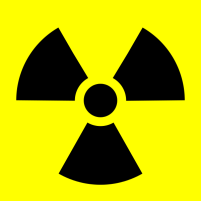- Учителю
- Урок по физике Unique phenomena of radioactivity 9 класс
Урок по физике Unique phenomena of radioactivity 9 класс
|
Subject: |
Term: |
Date: |
Form: | |||||
|
Physics |
3 |
|
9 | |||||
|
Theme: Unique phenomena of radioactivity. | ||||||||
|
Resources:
| ||||||||
|
Educational: to revise basic knowledge about structure of the atom
to check students' knowledge of the history of radioactivity
Educative:
| ||||||||
|
Learning outcome: Students 1. know scientists who worked with radioactivity 2. solve problems 3. know how to work in groups and in pairs; | ||||||||
|
Core information: scientists who worked with radioactivity, structure of the atom | ||||||||
|
PLAN: | ||||||||
|
Stage Time |
Teacher's actions |
Students' actions | ||||||
|
Org. Moment 1 |
Greetings
| |||||||
|
What do this sign mean? Is it dangerous? Do you know
history of radiation and how much is it harmful for our life?
What will we talk about at this lesson? | |||||||
10
2
15
5 4
2
|
Now let's check your basic knowledge about structure of the atom. You should answer the questions at a piece of paper and then we will check them. Appendix1 (students exchange their works with the nearby classmate and check the work, and put a mark in the end of the paper) |
Structure of the atom |
Answer |
Put one point for every correct answer | ||||
|
1 |
All elements are composed of atoms which cannot be subdivided. Who suggested this model of the atom? |
Dalton's model |
| |||||
|
2 |
Electrons orbit in distinct levels around the nucleus. Who suggested this model of the atom? |
Rutherford |
| |||||
|
3 |
Atom is a solid sphere with chunks of negative charge. (like plums in the pudding) Who suggested this model of the atom? |
Thompson's model |
| |||||
|
4 |
How many electrons does a Calcium ion Ca2+ (atomic number 20) have? |
18 |
| |||||
|
5 |
A potassium atom has 19 protons, 19 electrons, and 20 neutrons, what is its mass number? |
39 |
| |||||
|
6 |
A Bromine (atomic number 35) atom has 45 neutrons, what is its mass number? |
80 |
| |||||
|
7 |
A Uranium (atomic number 92) atom has 146 neutrons, how many protons does it have? |
92 |
| |||||
|
8 |
How many neutrons does a Uranium isotope U- 235 (atomic number 92) atom have? |
143 |
| |||||
|
9 |
How many electrons does an Oxide ion O2- (atomic number 8) have? |
10 |
| |||||
|
10 |
How many protons does an atom of carbon -14 isotope (atomic number 6) have? |
6 |
| |||||
|
11 |
How many electrons does a stable Sodium atom (atomic number 11, mass number 23) have? |
11 |
| |||||
|
|
Mark: 11-10 points - "5" 9-7points - "4" 6-5 points - "3" |
|
Student's mark: | |||||
|
Teacher's mark: | ||||||||
Let's divide into 3 groups: proton, neutron, and electron. Title is on the opposite side of the colored sticker. (and sticker is on the back side of the chair prepared before the lesson)
(students were given a task several days before the lesson to study life of three famous physicists E. Rutherford, H. Becquerel, M. Curie)
You should make a poster about famous physicists discovered radioactivity.
Your answer will be estimated by the following plan:
-
Date of birth
-
Country of birth
-
Place of study
-
Contribution into physics
-
Achievements
-
Death date and place of bury.
(Students are given envelopes with mixed information about scientists; they should choose only the suitable one. Additional information should be written with a marker)
Posters discussion.
Putting points according to the plan.
Now let's check theme we have studied during this lesson. You will listen to questions about physicists studied today. If you know answer raise your hand and get a point.
Questions on famous physicists. (blitz quiz, individual points)
-
What university M.Curie was awarded her Ph.D. in June 1903? (by the Sorbonne.)
-
Why did Maria decide to go to Paris in 1891 at the age of 24? (Marie followed her sister Bronya who studied there)
-
Who became the Chair of Physics at the Sorbonne university? (M. Curie)
-
Who was the leader of the Cavendish laboratory where E. Rutherford worked? (J.J. Thompson)
-
Who was farther of Henry Becquerel by profession? (Physicist)
-
Who discovered two types of radioactivity? (E.Rutherford)
Let's look a film about radiation around us.
Write down 5 sentences explaining everything you have understood this lesson.
Stick smiles on the periodic table of radioactive elements describing your mood in the end of the lesson.
-
Home Assignment
2
§4.3 p65
-
Giving feedback and assessment
1
Today we studied history of radioactivity. You did a good job!
Appendix1
Mark:
11-10 points - "5"
9-7points - "4"
6-5 points - "3"
Student's
mark:
Teacher's
mark:
